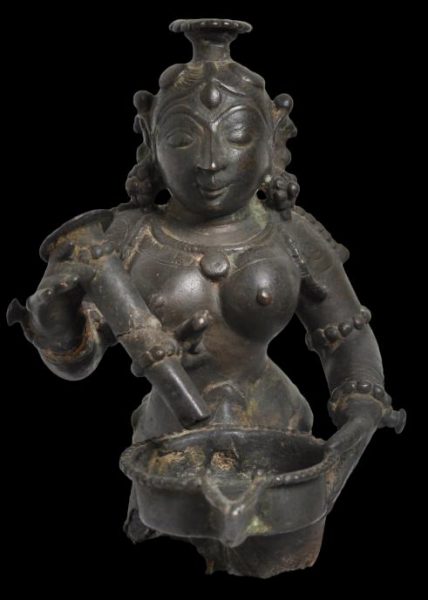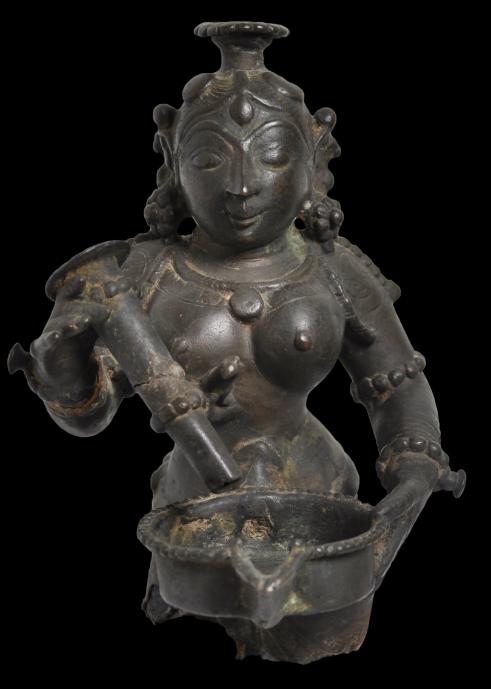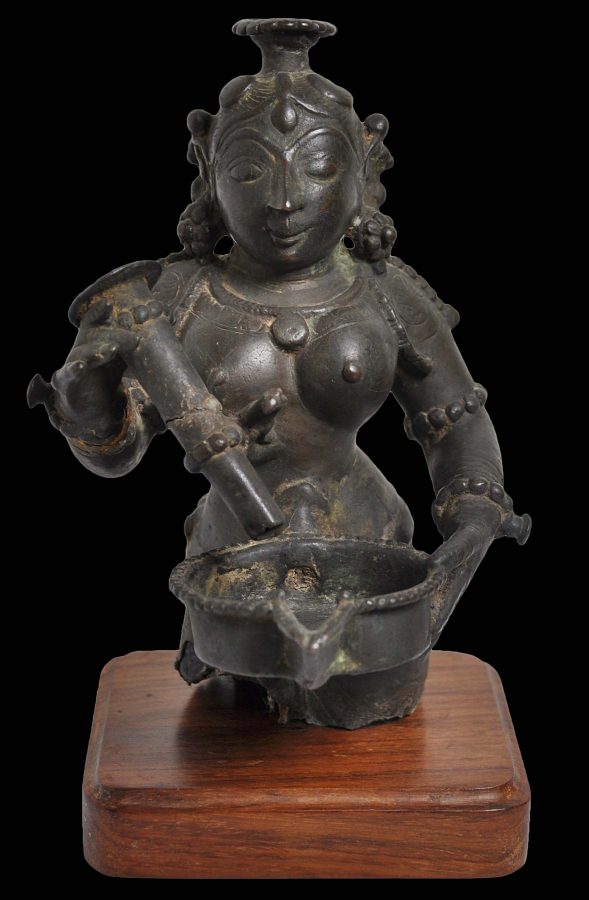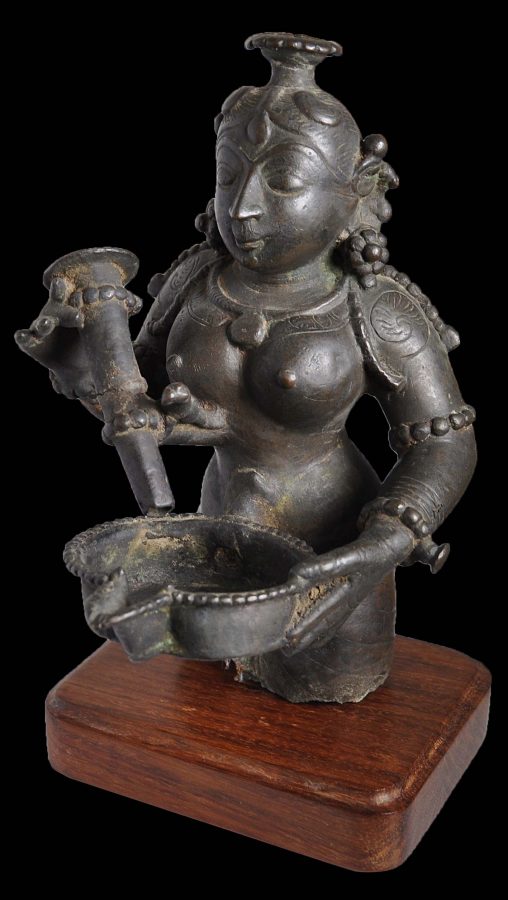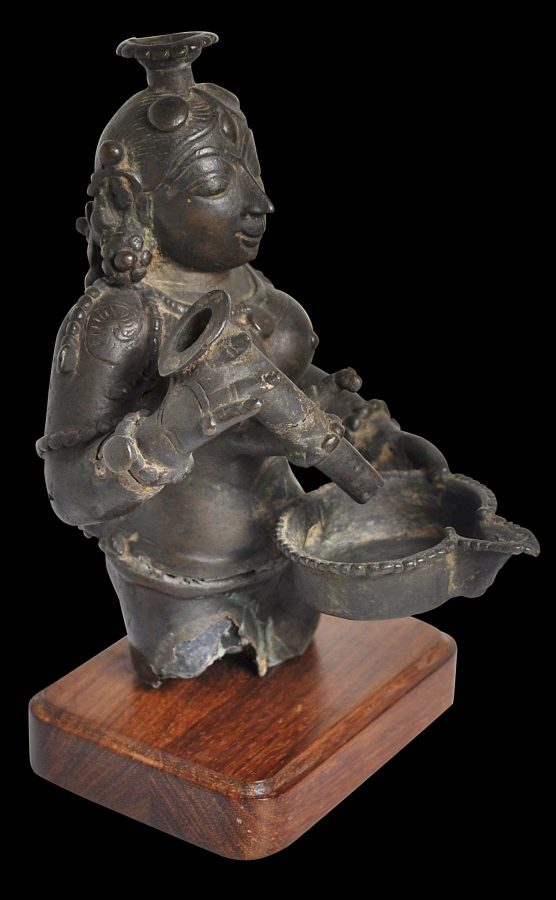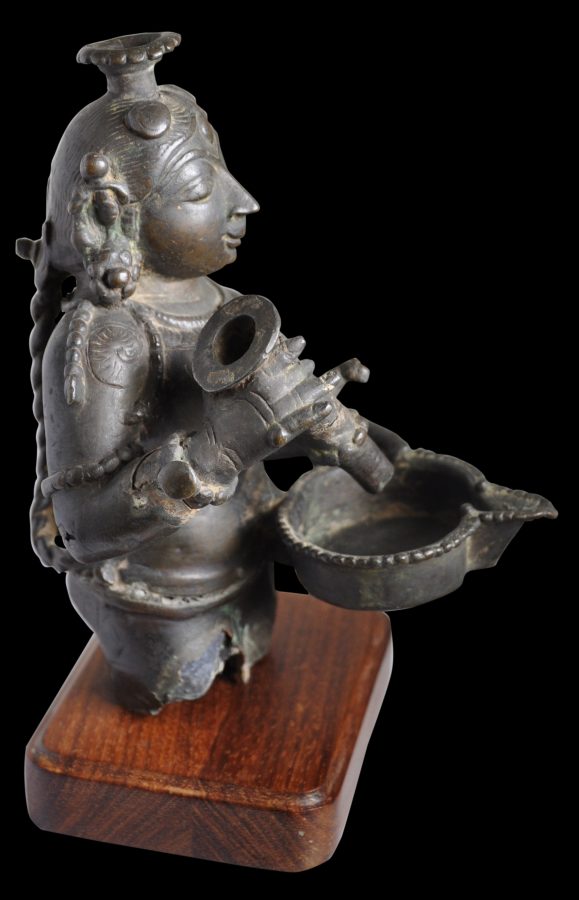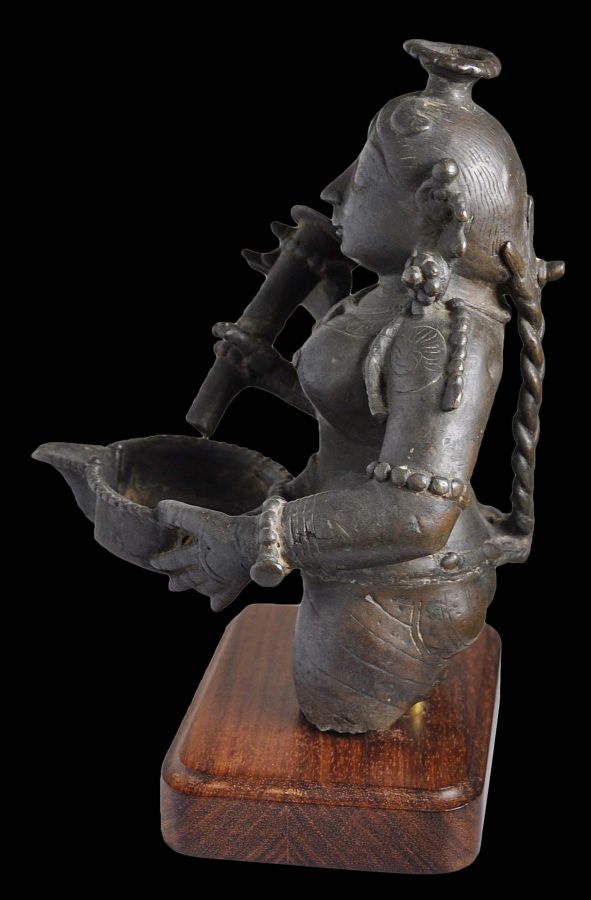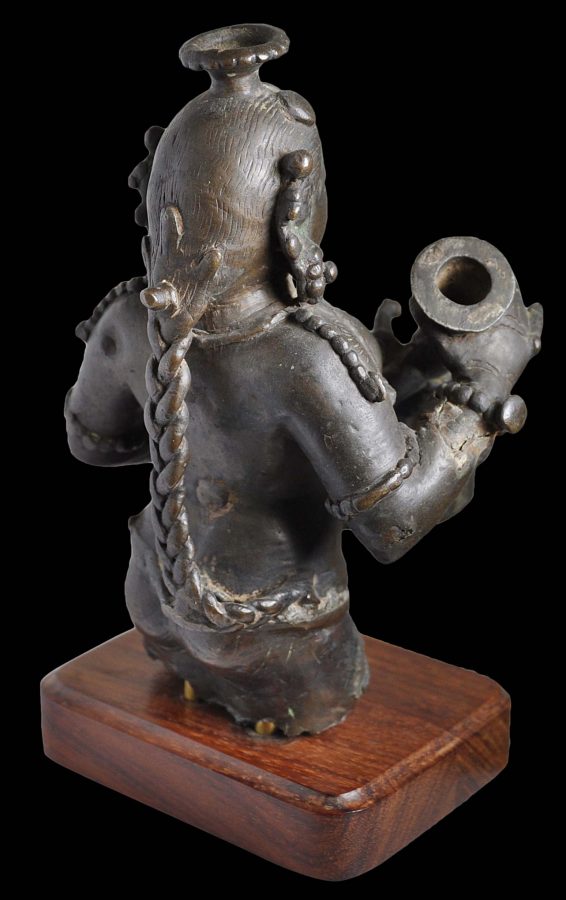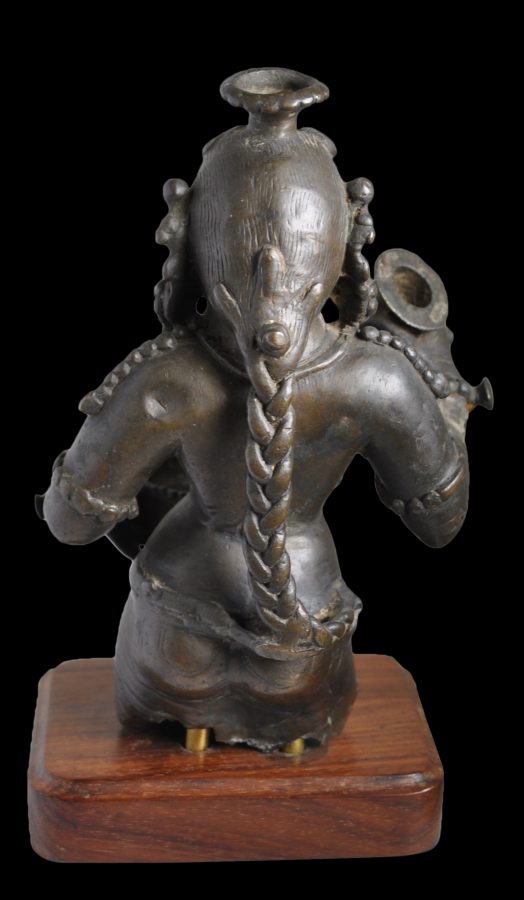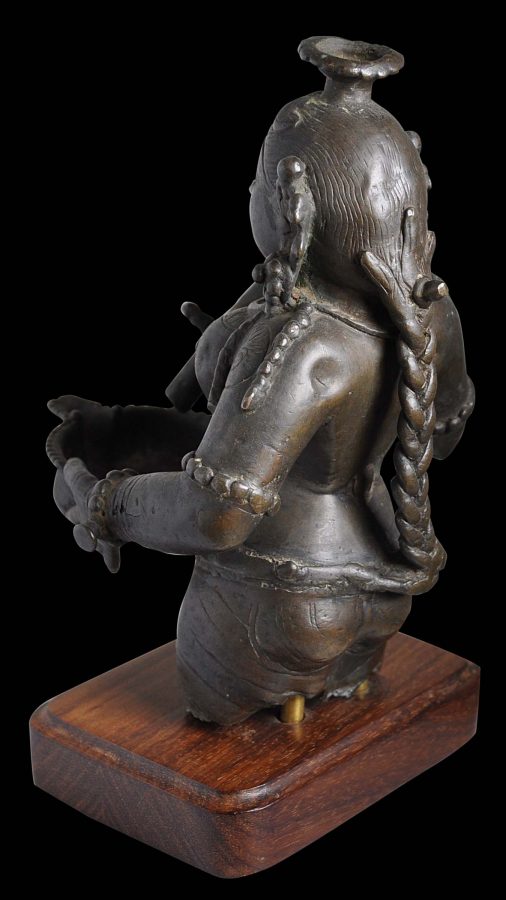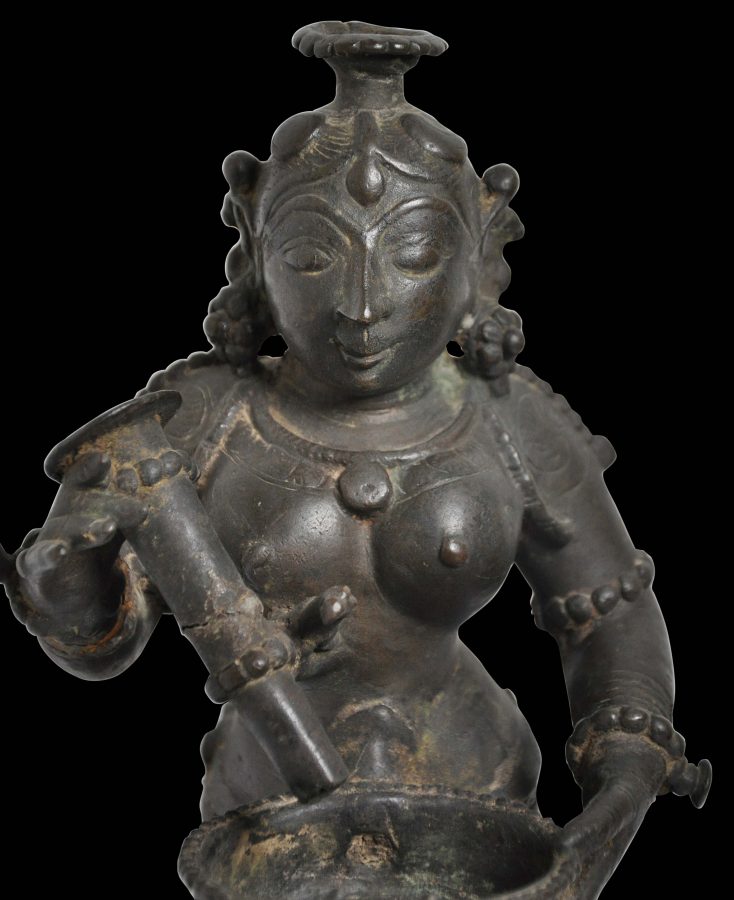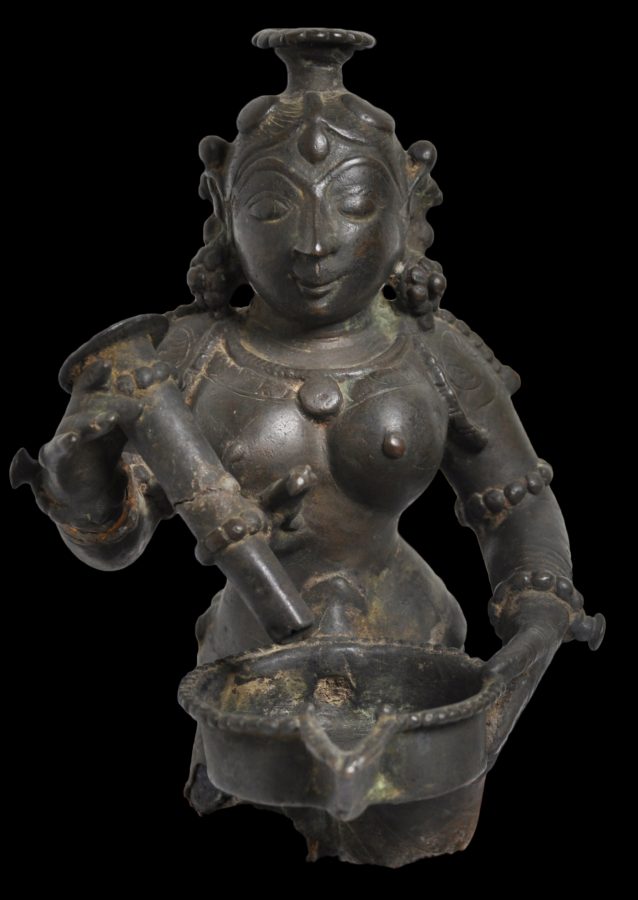This unusual lamp is of a form that often is found as a half – from the waist of the deity up. It is unlikely that such examples were made this way; it is more likely that the lower sections have been lost. In any event, the image now stands upright on a custom-made stand.
The casting of this example is also unusual in that the bronze is relatively thin (the figure is hollow) and it remains weighted and supported by the casting core that is retained inside and which lines the sides of the image.
The figure shows celestial female attendant, identifiable with Lakshmi, the goddess of light and wealth. The deity holds with the left hand a wide oil well or wick pan that has a flat bottom. Her right hand holds a dispensing funnel through which oil could flow and then drip into the pan to replenish it and keep the lamp burning. Such a mechanism is in keeping with the Hindu precept of akhanda jyot – that a lamp used for worship should burn without interruption. (The offering of lit lamps to deities is one of the nine essential Brahmanic forms of worship.)
The figure is cast with ample breasts, copious jewellery including pearled wrist and armbands and large earrings. A long, fine plait of hair falls down and away from her back.
The image is unusual and sculptural. It is of a good size and has a fine, dark patina consistent with significant age.
References
Anderson, S., Flames of Devotion: Oil Lamps from South and Southeast Asia and the Himalayas, UCLA Fowler Museum of Cultural History, 2006.
Kelkar, D.G., Lamps of India, Publications Division, Ministry of Information and Broadcasting, India, 1961.


